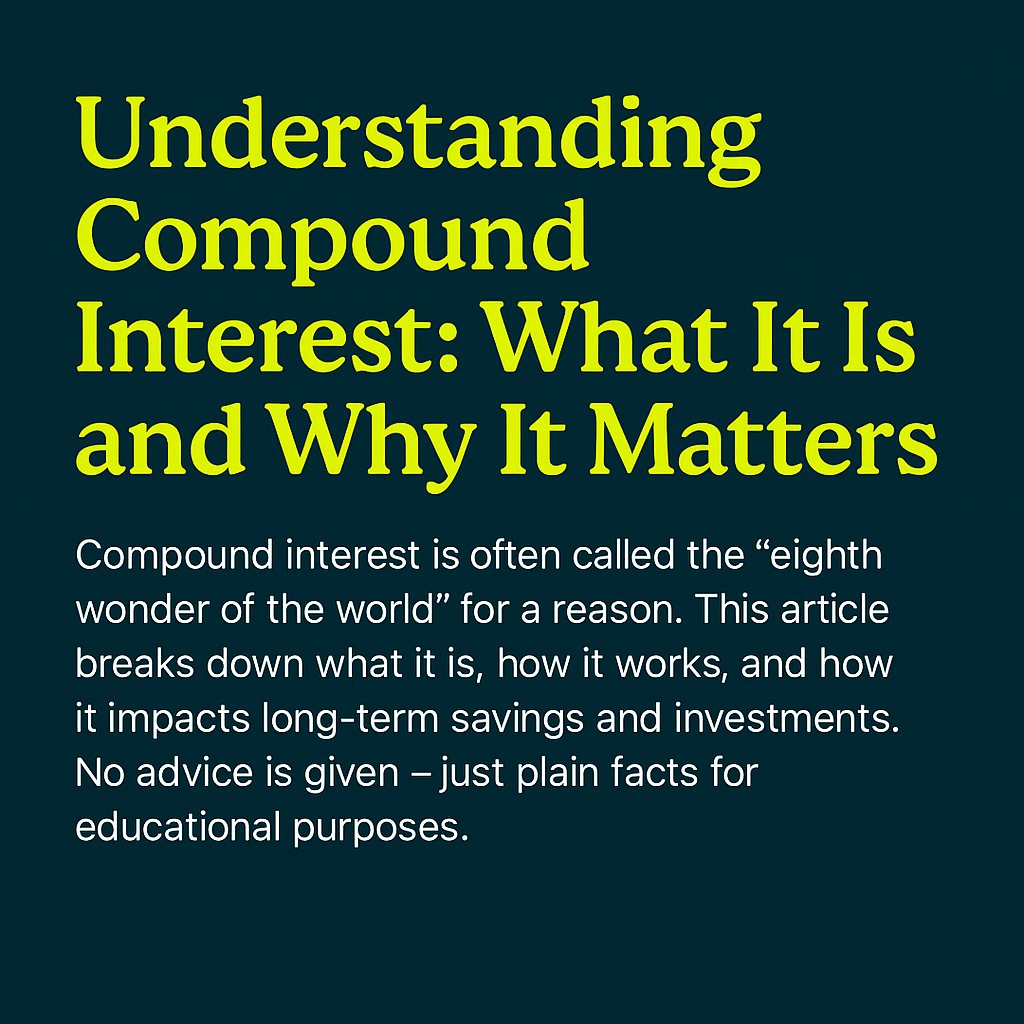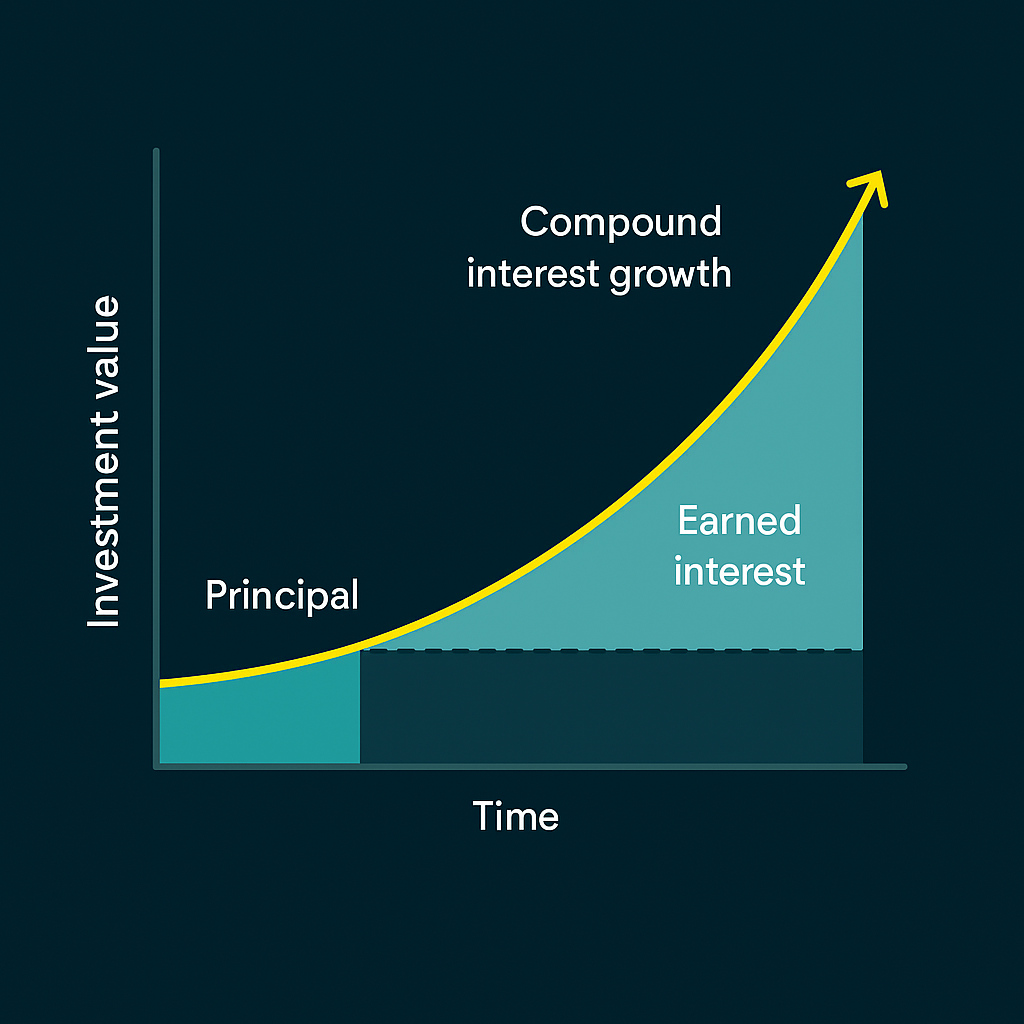Compound interest is often referred to as the “eighth wonder of the world”, and for good reason. It is a powerful concept that influences how savings and investments grow over time, often more significantly than people expect.
In this article, we explain compound interest in clear terms, show how it works, and offer relatable examples. This is not financial advice, just educational content to help build your understanding of personal finance.
Compound interest is interest earned on both the original amount you save (the principal) and the interest that has already been added. It is often described as “interest on interest” or the snowball effect, because the more time your money must grow, the bigger it becomes.
In contrast, simple interest only applies to the original amount. Compound interest, on the other hand, allows your money to grow faster because each period adds more value on top of what is already there.
Compound interest works by reinvesting the interest you earn so that your balance grows at an increasing rate over time. The frequency at which interest is added, daily, monthly, or annually, affects how quickly this growth happens.
For example, if interest is compounded monthly, you earn interest 12 times a year, boosting the snowball effect. The more often it is compounded, the greater the impact over time.
This is a concept that applies to savings accounts, pensions, and investment vehicles, but always check the terms of any product carefully. This explanation is general only and not a product recommendation.
The Rule of 72 is a simple formula that estimates how long it takes for your money to double at a given interest rate. The calculation is:
72 ÷ interest rate = years to double
For example, if your savings earn 6% interest, it would take roughly 12 years to double.
This rule is a helpful shortcut for basic understanding, but it’s only a rough estimate. It does not account for tax, fees, or real-world variability.
Yes. The standard formula is:
Let’s say you save £1,000 in an account with 5% annual compound interest and leave it untouched for 10 years. By the end of that time, it would grow to approximately £1,629, without adding a single extra pound.
These scenarios all demonstrate how compound interest can build financial momentum over time.
The magic of compound interest lies in how time multiplies growth. The longer you leave your money invested or saved in a compound interest account, the more it accelerates.
Albert Einstein allegedly called compound interest the “eighth wonder of the world” because of this incredible effect. What starts small can grow impressively large, especially when combined with patience and consistency.
Always review the product details carefully before making any decision, this article is for information only.
It is like a snowball rolling downhill, the longer it rolls, the bigger it gets. Interest earns more interest over time.
Use the formula: A = P (1 + r/n)ⁿᵗ or apply the Rule of 72 for rough doubling estimates.
Products like Junior ISAs may be used, but check with a regulated adviser before making any financial decision.
Common metaphors include a snowball, a growing tree, or a ripple that expands further with each ring.
Use free online calculators or apply the standard formula with basic inputs.
It depends. Fixed offers stability: variable can change with the market. This is a generalisation, seek advice if unsure.
Typically, equities carry more risk than bonds or cash. However, risk depends on many factors, get professional guidance for specifics.
Compound interest is just one of many powerful tools to understand as you build your financial knowledge. At Zomi Wealth, we focus on offering clarity without complexity and never regulated financial advice.
Want to explore these ideas further with confidence?








